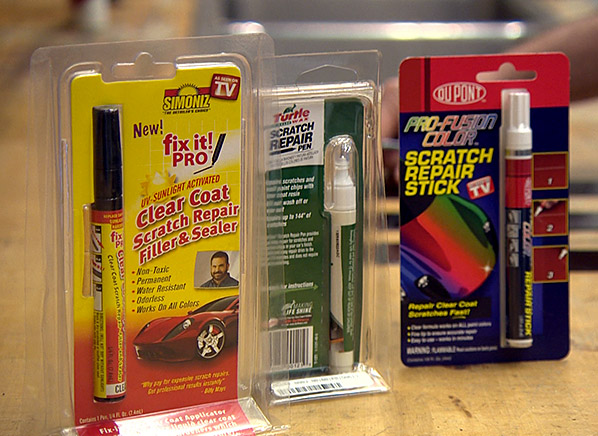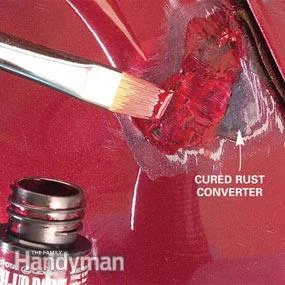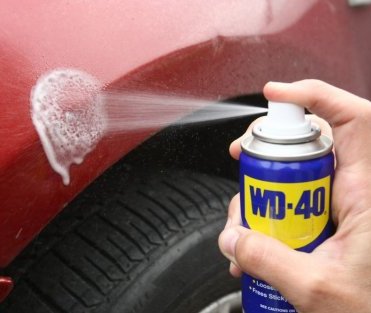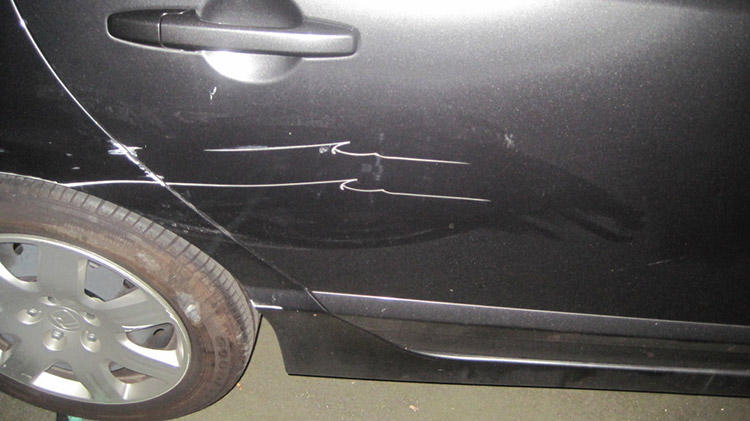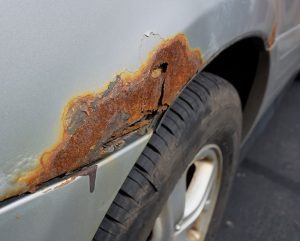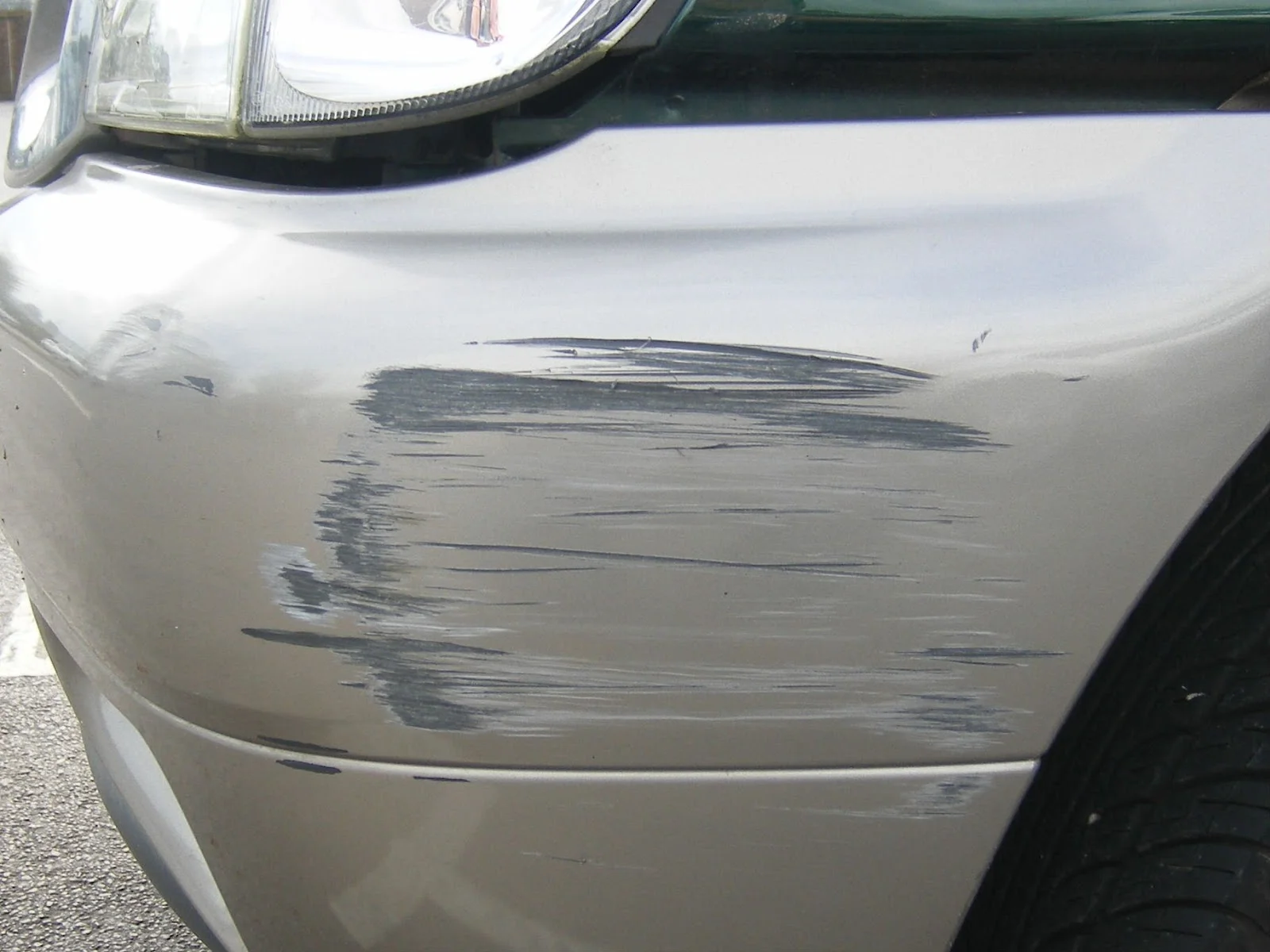Why Toothpaste Won't Fix Scratches - and Other Paint Fix Fails
/The Toothpaste Scratch Fix Myth & Two Other Bad Ideas
You've seen it a countless number of times on life-hack websites and YouTube videos... "fix the deep scratches in your car's bumper with toothpaste!" The question looms in your mind, "does it really work?"
Well folks, I'm here to fill you in from personal experience on the real truth about repairing those ugly scratches and gouges in your car's bumper or panels with a tube of toothpaste, a buffing cloth, and sheer determination. I'll also hit on two other "methods" that we've often seen circulating on the internet. So let's get started!
The Toothpaste Scratch Fix
This scratch fix method is probably the most popular and circulated of all the ideas because it only costs you a squeeze of your current tube of minty fresh Colgate. Can it work? Yes. Does it work in most situations? No.
What I found out the first time that I tried to fix deep scratches in my bumper with toothpaste was that Colgate won't fix the deep gouges in plastic. Nor does it magically replace paint that is missing from the bumper.
The only thing that Colgate (or any other fantastic brand recommended by the American Dental Association) can do for you is remove paint that has been laid on your bumper by another vehicle, or a painted pole when there is no further damage to the plastic bumper or your metal panel.
But unless you've got some seriously skilled hands, it's not going to look like it did before you had that minor fender bender. You'll see a dull remnant of where you applied that elbow grease to scrub off those marks.
If you don't mind an imperfect repair, this might work for you. But if you're driving a new car with some seriously ugly scratches on the fender, get your car to a body shop to have it repaired professionally where nobody will be able to tell that it was hit.
My advice? Leave toothpaste to teeth and the American Dental Association. Consult your licensed auto body shop for scratches on your car.
The Paint Touch-Up Kit
This method is worse than the toothpaste solution. You are guaranteed to be able to clearly see that you used a touch up brush if you try to paint that scratch on your own with the little kits they sell over the counter.
Why doesn't it work? Because it isn't spray-applied, where the paint is finely atomized. But what about the little spray cans? They can be slightly better, but will splatter, and will only work for large areas.
Besides the fact that the touch up bottle of paint isn't spray applied, it's not going to look good because it is a base coat color. Your car has a base coat, and a clear coat. Sometimes there can be three coats: base coat, pearl coat, and clear coat.
You can't paint on a 2-stage base/clear combination with a paint brush. You can actually buy your car's base color in a rattle can, along with a can of clear. But even the most skilled hands aren't going to be able to apply it in such a way that you won't notice the repair.
In fact, if you try this yourself and have no experience, you could end up making your car look worse than it did before it got scratched. How do I know this? Because I tried it years before I owned my first body shop. I tried to rattle can base and clear coat on my 1988 sky blue Cadillac that I ran underneath a shipyard chain in a closed parking lot, and I ended up with horrific tiger stripes running length-wise down my hood.
My recommendation on touch up brush kits? Don't ever, ever do it! It will be uglier than you can imagine, like a 5-year-old using finger paint to fix your car. Trust me on this one. If the scratch is deep enough for touch up paint, and can rust the metal, leave it up to a professional to have it repaired!
The "WD-40" & Flame Method
I shouldn't even post this one, for fear that someone will actually go out and try to do this. This quick-fix method claims that you can use WD-40 to hide and remove scratches from your car's paint by spray applying the product to the affected area, and then spraying a small flame to create a blow torch that "re-seals" the clear.
This method is an absolute hoax. The key word in the description is "hide". Rather than fixing the scratches, it's just concealing them with the oil in the product. The oil is shiny, and sprays on the surface like a clear coat. But after it dries or is washed off, you've got the same old scratches that you started with.
Blowing flames on your car to fix the paint is not just dangerous. Applying a high heat like that is actually damaging to your paint coating, and this part of the method actually has no benefit or positive effect. If you're a pyromaniac, you'll have a blast with this method. Plus your original scratches. Otherwise, my obvious recommendation is to avoid this one at all costs!
Cost of Professional Scratch Repairs
Now that we have exposed all of the crack-pot scratch fixing techniques that won't do you much good, we can move on the actual cost of having your ugly scrapes and bumps fixed the by someone who has the skill to make your car look like new, as done by a professional in a body shop that has the tools and equipment to do the job right!
There is a significant amount of prep time required to mask off the car to protect it from overspray getting on the panels that are not effected. This is required to have the most professional looking end result. That's why it costs quite a bit more for a body shop to perform a repair, but the end result is worth the time put into protecting the other paint surfaces, the windows, windshield, and tires.
The following examples are rough estimates, and each one can vary depending on the size of your car, the expense of the original paint, and the severity of the damage. Keep in mind that the focus of this guide is on light damage repair, not heavy collision damage. But this will give you a better idea of what you'll need to invest in order to properly restore your vehicle's paint, and the shine.
Light Scratches - $75 to $100
A "light scratch" is damage that only goes through the top layer of your vehicle's clear coat. The clear coat on your paint job is actually paper-thin, but if the scratch doesn't reach down into your base coat, it can be wet sanded with 1200 to 1500 grit sanding paper and then buffed with a body shop orbital buffer and buffing compound.
The key is having the experience to know how much you can sand the clear and not remove too much material that takes the clear coat completely off, and then restoring the shine with the right buffing compound. Orbital buffers, when used improperly, can completely remove the clear coat and even strip base coat down to the metal if applied with too much force. It's possible to triple the cost of the repair if not done correctly. That's why it is best to have a skilled body technician perform this repair to save you time and money!
Deep Scratches - $150 to $250
When scratches go through the clear coat down into the base color, or even down to bare metal, the repair area has to be sanded a little more where the scratch is feathered out into the surrounding area. Next, base coat color is sprayed onto the area, blending it into the surrounding area. Finally, clear coat is applied over the entire panel to make a uniform shiny finish that doesn't show any signs of defect.
Some smaller body shops will apply clear coat only to the area where the base color has been sprayed, and blended into the rest of the panel. When the clear coat is not applied over the entire panel, a hazy ring is left surrounding the area that has been sprayed. Some people don't mind this, but it won't leave your vehicle looking like it did when it was new. The average cost of repairing the deep scratch ranges from $150 to $250 per panel, depending on how many panels the scratch runs through.
Deep Scratches With a Dent - $200 to $400
When a deep scratch is accompanied by a dent from the contusion that caused the damage, the metal surface has to be re-shaped before the new base color can be blended in and the clear coat can be applied over the panel. This requires using special dent fixing equipment in order to work the metal surfaces, and in some instances, a small thin amount of body filler must be skimmed over the finished area and sanded flat before the paint is applied. Etching primer must be applied to bare metal surfaces before spray coatings can be applied to insure proper adhesion.
The deep scratch requires a bit more labor to correctly re-shape the metal in addition to prepping and masking the vehicle before the spray coatings are applied, hence the higher price. You have to watch out for amateur repair specialists who fill dents with body filler rather than re-shaping the metal. When body filler (like Bondo) is applied thicker than 1/8th of an inch, it will be prone to cracking, and can even break away from the metal surface over time. It's not fun wasting money to repair the same dent twice, so it pays to have it done the right way the first time!
Rust Repair - $150 to $750 (or more)
The bad thing about rust is it only gets worse over time if you don't have it taken care of when you first discover it. Sometimes rust will be visible, and other times the only indication of rust forming is when your paint looks like it has a swollen lumpy raised spot. Rust can either be on the surface of the metal, or it can go completely through a panel.
If you discover rust damage in time, it only requires sanding down to bare metal in the area affected. But if rust is allowed to spread, it can eat straight through the metal like a cancer. Surface rust can be repaired at a cost similar to deep scratches, and is refinished in the same manner. But rust that goes completely through a panel requires the affected area to be cut out, and a new patch panel welded in. In that case, replacing and refinishing an entire panel could cost less than welding in patch panels.
That's why it is very important to inspect your vehicle's surfaces to insure that you catch rust damage before the cost gets out of hand.
Damage to Plastic Bumper Covers - $150 to $600
Deep scratches and gouges to bumper covers can get a little dicey. If the scratches are shallow enough, it might only require sanding, application of primer and a special adhesion promoter, and spraying of the paint coatings. As with regular panel repairs, the clear coat must be applied to the entire bumper panel in order to restore the original shine without a trace of the blended repair.
If a bumper is damaged extensively, or if there is cracking in the plastic, there are two different ways it can be repaired. Cracks can be "welded" back together with a special tool that fuses the fissure back together with staples, but this can increase the overall cost of the repair if it is bad enough. The alternative is replacing the entire bumper cover and applying the base color and clear to match the vehicle's color.
The challenging thing about bumpers is adhesion. Paints don't like to stick to plastic. A special primer and an adhesive promoter have to be sprayed on the bumper to insure the new paint won't peel and flake off. You've probably seen several instances of flaking on bumpers that have been repaired, and this can even happen when bumpers are painted at professional body shops. That's why extreme care must be taken when refinishing plastic surfaces.
Conclusion
The amount of money you spend on refinishing damage done to your vehicle's paint depends on the newness of your car, the cost of the type of original paint color, and whether or not you want it to look like it did when it was new. For newer cars, it is best to have scratches and dents repaired professionally, because you want to protect the value of your investment. But for older cars, your level of comfort with a less expensive repair might be different.
If you have questions about how much it will cost to have your mishaps refinished, send a picture of the damage to your car to carlton.flowers@gmail.com and I'll be glad to give you an eyeball estimate of what it will take to restore it to its original glory!
Carlton Flowers
The Airgun Artist
Wanna know what brands the pros use to detail their own cars? Check out these recommended products available on Amazon.com. These are some of the exact same products you’ll find on the shelf in my body shop, so you can trust that they work. Hit the links and help support the Body Shop Tips blog when you purchase!

